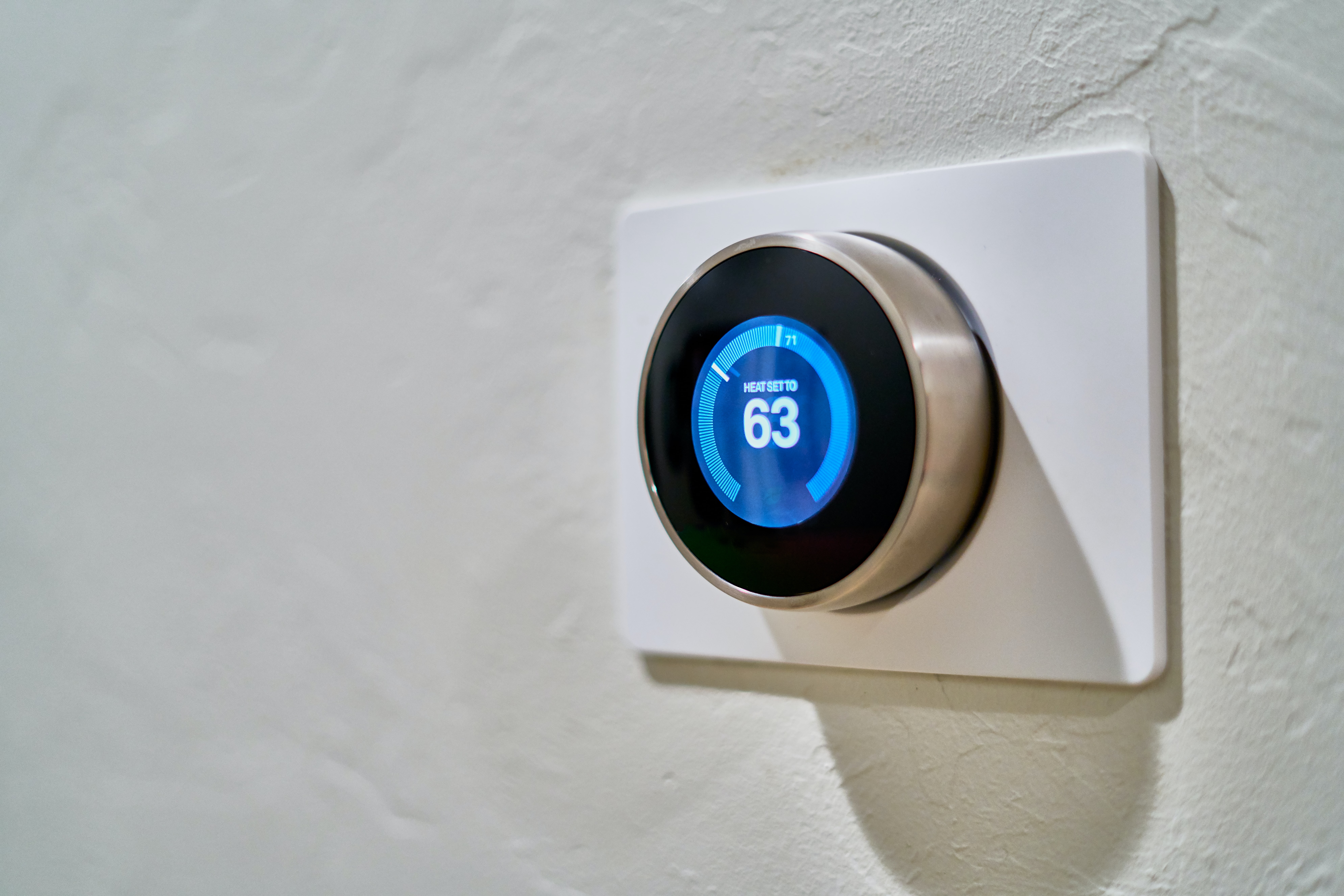Saving energy and protecting privacy in the Internet of Things era
This is one of two stories about research happening in Omid Ardakanian’s lab in the Department of Computing Science. Read the first story to learn how this research unit is paving the way for a transition to electric vehicles.
Commercial buildings are energy black holes. Lights and temperature control systems stay on when people aren’t present, electrical devices keep running, and sometimes we just forget to turn the heat down, even when the office is sweltering.
Up to 30 per cent of the electricity most commercial buildings draw from the power grid could be eliminated with improved building technology, according to a report from the Pacific Northwest National Laboratory.
Tinanyu Zhang is a PhD student supervised by Omid Ardakanian in the Department of Computer Science. He’s using computer algorithms and machine learning to create a system that can conserve vast amounts of wasted energy in commercial buildings, and he thinks that for many buildings, this won’t even require new infrastructure or upgrades.
“Currently a lot of buildings are equipped with sets of sensors,” Zhang said. “For example, the new U of A Pharmacy/Dentistry Centre has tens of thousands of sensors. Those sensors might do one specific thing, like reading temperature or CO2. But combining the CO2 sensor and the temperature sensor could actually tell us how many people are inside a room.”
Keeping track of the temperature in each room of a 30-story office tower is a big task for human beings. However, information gleaned from temperature and CO2 sensors that are “fused” together could support the creation of an automated, intelligent system that can tackle this problem with more ease.

Huangpu Qu District, Shanghai at night. Photo by Peng LIU from Pexels.
Zhang hopes to create an algorithm that can collect data about occupants’ temperature preferences with minimum human effort in order to find ideal room temperatures. This could work even in shared office spaces, where a person’s location in the office would determine how much heat they get, and it could be aided by personal fans on desks and heat strips on chairs.
However, Zhang said, “Our work is not just to change the temperature set point so people feel comfortable. We also want to minimize the total energy consumption of the whole building. Therefore we have to balance between two things.”
Zhang is working with two different algorithms in his theoretical building: an “online” and an “offline” algorithm.
Both algorithms can predict which temperature settings will be ideal for a specific office and analyze environmental information in real time. However, the online algorithm allows users to experiment with temperature settings more easily.
“If we use the online learning algorithm, we noticed that the amount of energy you could save highly depends on the energy parameters you set,” he said. “If you prioritize energy savings, then our online learning algorithm will save a significant amount of energy. If you set the thermal comfort to a higher value, then it will consume more energy compared to the offline algorithm.”
Staying private in the “Internet of Things” era
Omid Ardakanian’s research group is testing similar ideas on an even larger scale by prototyping a “smart grid” that would use new and existing sensors to control the flow of electricity through entire energy grids.
Although these smart systems can help save energy, they introduce a very 21st-century dilemma into an arena where one didn’t exist before. Adding more sophisticated sensors to our energy grid, and the energy distribution structures inside buildings, connects them to the “Internet of Things,” objects equipped with sensors that collect data about their environment and communicate with other devices in this network–take smart homes, for example, in which thermostats, fridges and even toasters are connected to the internet.
Zhang’s project could collect enough data about a building’s occupants to reveal gender, height and location. The smart grid proposed by Ardakanian could gather enough data to pinpoint exactly which brand of an appliance a house is stocked with, when the appliance is in use, whether a home is insulated or not, and even when people are away from the house.

Photo by Dan Lefebvre from Unsplash
For those who want to remain anonymous, whether to protect themselves from targeted advertising, surveillance, or break-ins and theft, this poses an obvious problem.
That’s why Xin Yang, a PhD student in Ardakanian’s lab, is designing an algorithm that can protect privacy.
“We are trying to use machine learning to improve anonymization techniques,” Yang said. “The basic idea is we have two small models: one model aims to anonymize patterns that contain sensitive user information in the data, and another model acts as an adversary trying to identify the private information you are trying to obscure. So they are fighting against each other. I’m trying to improve my hiding technique so that my adversary cannot detect my private information.”
Yang’s project is designed to tackle most anonymization tasks. Any kind of sensor that collects data, including the motion, image and voice recognition sensors in things like smart watches, phones and virtual assistants should be able to use the method.
However, anonymization algorithms can muddle sensor data so much that the function of systems like those being designed by Zhang and Ardakanian is sacrificed.
So Yang and his colleagues are trying to find a balance between guarding user privacy and maintaining functionality–one that will allow temperature and light controls in a building to continue saving energy, but prevent them from identifying how many people are in a room or what time they enter.
Similarly, the method could stop sensors built into smart devices from revealing a person’s gender, weight, height, or even mood.
“I’m not the first one to explore this area,” Yang said. “But we have identified one of the most important problems, which is that the existing anonymization or obscuring methods use publicly available, pre-collected datasets to train their anonymization models. This is a very problematic assumption, because in the Internet of Things era, usually the service providers need to collect their own data.”
Many Internet of Things devices take user privacy into account by giving users the option to not share their data. But smart technologies that use sensors and other information-gathering tools need data to run optimally. Yang is working on a unique method to bypass the issue.
“We are addressing this by letting the user’s own device ‘train’ the anonymization model,” Yang said.
To detect and obscure sensitive data, computers must be taught to identify which bits of information are private and to add the right amount of distortion to that information so it can’t be deciphered by third parties such as advertisers or hackers.
This process typically requires large datasets and powerful computers that are only available to service providers. Thus, private information must be sent to service providers before it can be anonymized.
“Our approach moves the training process from the service provider side to users' own mobile devices,” Yang said. “The data never leaves the user's device, and thus, user data will not have the risk of being exposed to others.”
New technologies that drive us towards an energy efficient, healthy, and sustainable future are a necessity, but they can also invite security risks, Yang said. That’s why these advancements must coincide with research into digital privacy.
“We foresee that the development of mobile internet of things technology will pose unprecedented threats to unstructured data, especially sensor data,” Yang said. “Therefore, users are facing many more privacy threats, as their sensitive information could be captured from a wide range of mobile IoT devices in near real-time.”